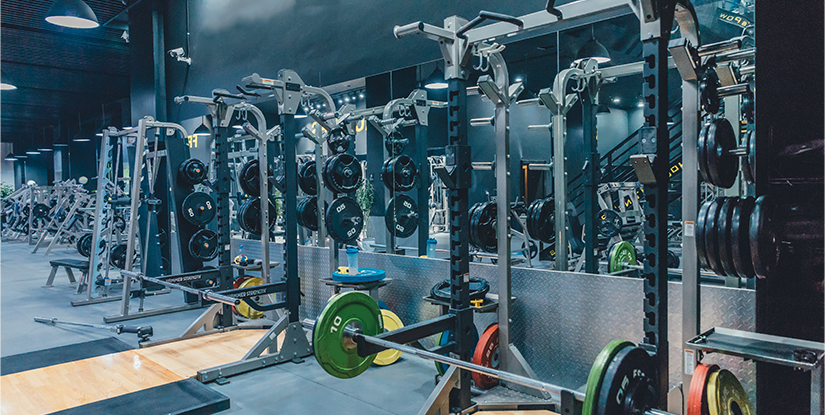Tricep Pull Down: Technique, Variations, Programming & Safety

Overview of the Tricep Pull Down
The tricep pull down, commonly performed on a cable machine, is a foundational exercise for isolating the triceps brachii. It emphasizes elbow extension under controlled resistance and is suitable for a wide range of trainees — from beginners to advanced athletes. When programmed and executed properly, the tricep pull down enhances arm strength, improves pressing performance, and contributes to balanced upper-body aesthetics.
Anatomy and Purpose
The triceps brachii consists of three heads: long, lateral, and medial. The pull down primarily targets the lateral and medial heads, with the long head engaged depending on elbow position and shoulder orientation. The exercise trains the final phase of pressing movements and supports joint stability by reinforcing the elbow extension pattern.
Proper Technique
- Starting position: Stand facing the cable column with feet hip-width apart. Attach a straight bar, rope, or V-bar; grasp with a neutral or pronated grip and align forearms parallel to the floor.
- Set-up: Tuck the elbows close to the torso and maintain a slight forward lean from the hips. Keep the scapulae stable and the core engaged to prevent excessive torso movement.
- Execution: Initiate movement by extending the elbows to press the handle down until arms are fully extended. Pause briefly at full extension to ensure contraction of the triceps.
- Return: Control the ascent, allowing the elbows to flex to approximately 90 degrees or slightly lower, depending on range of motion and shoulder comfort.
- Breathing: Exhale during the pressing (concentric) phase and inhale during the return (eccentric) phase.
Common Variations
- Rope Tricep Pushdown: Greater emphasis on the lateral head and ability to pronate/splay the rope for full contraction.
- Straight-Bar Pushdown: Adds stability and allows heavier loads; emphasizes medial head engagement when wrists remain neutral.
- Reverse-Grip Pushdown: Supinated grip increases long-head activation and can reduce wrist strain for some lifters.
- Single-Arm Cable Extension: Useful for correcting unilateral imbalances and improving mind-muscle connection.
Programming Guidelines
Choose load and volume based on training objectives. For hypertrophy, 8–15 reps per set with 3–4 sets is common, ensuring controlled tempo and full range. For strength emphasis, 4–6 reps with heavier load and longer rest intervals can be effective, though compound pressing should remain the priority for max strength programming. For muscular endurance or metabolic conditioning, 15–25 reps with shorter rest periods may be used.
Progressive Overload and Variation
- Increase load incrementally while maintaining strict form to drive strength and size gains.
- Manipulate tempo: slower eccentrics (2–4 seconds) increase time under tension; paused contractions at full extension enhance peak activation.
- Alternate attachments and grips periodically to distribute stress across triceps heads and supporting structures.
Common Errors and Corrections
- Excessive torso lean or use of momentum — correct by reducing load and reinforcing core bracing.
- Flaring elbows — cue keeping elbows pinned to the sides to maintain tension on the triceps.
- Incomplete range — emphasize full extension and controlled return; use mirrors or a coach for feedback.
- Over-gripping the handle — a relaxed yet secure grip improves triceps isolation and reduces forearm fatigue.
Equipment and Safety Considerations
Use a well-maintained cable machine with smooth resistance. Select attachments that allow a natural wrist position. If you have elbow or shoulder pain, reduce range of motion and volume, and consult a qualified professional. Always prioritize technique over load and avoid sudden jerking motions. Warm up the elbow and shoulder joints with light resistance and dynamic movements before heavy sets.
Integration into a Training Plan
Place tricep pull downs after compound pressing movements (bench press, overhead press, dips) when training for hypertrophy or strength to avoid pre-fatiguing the triceps for major lifts. For accessory-focused sessions, they can be a primary movement. Balance tricep work with biceps and posterior chain exercises to maintain muscular symmetry and joint health.
Summary
The tricep pull down is a versatile, low-risk exercise for enhancing elbow extension strength and triceps hypertrophy. Attention to setup, controlled execution, and appropriate programming will maximize benefits while minimizing injury risk. Regularly cycling variations and implementing progressive overload will sustain long-term adaptation.
FAQs
- What muscles does the tricep pull down work? - Primarily the triceps brachii (lateral and medial heads), with secondary stabilization by the shoulders and core.
- How many sets and reps are optimal? - For hypertrophy: 3–4 sets of 8–15 reps; for strength: 3–5 sets of 4–6 reps.
- Should I use rope or bar? - Rope for peak contraction and splay; bar for heavier loads and stable positioning.
- Can beginners perform this exercise? - Yes; it is suitable for beginners when taught proper technique and load management.
- How often should I train triceps? - 2–3 times per week, depending on overall volume and recovery capacity.
- Is the tricep pull down better than dips? - They serve different roles: pull downs isolate triceps; dips are a compound pressing movement that engage chest and shoulders more.
- What common mistakes reduce effectiveness? - Using momentum, flaring elbows, incomplete range, and excessive grip tension.
- How do I progress the exercise? - Increase load, adjust tempo, add paused reps, or switch attachments for variation.
- Is it safe with elbow pain? - Use lighter loads, reduce range, and consult a clinician if pain persists.

